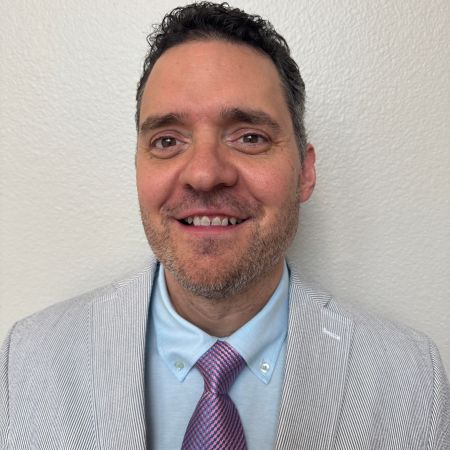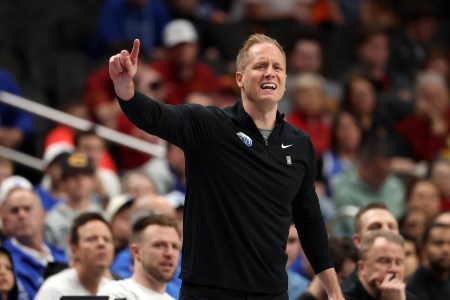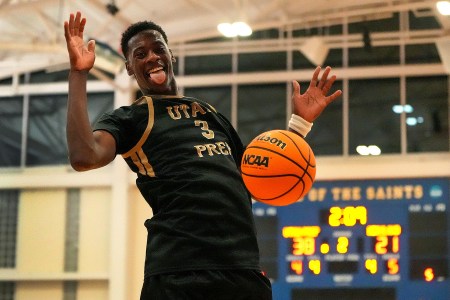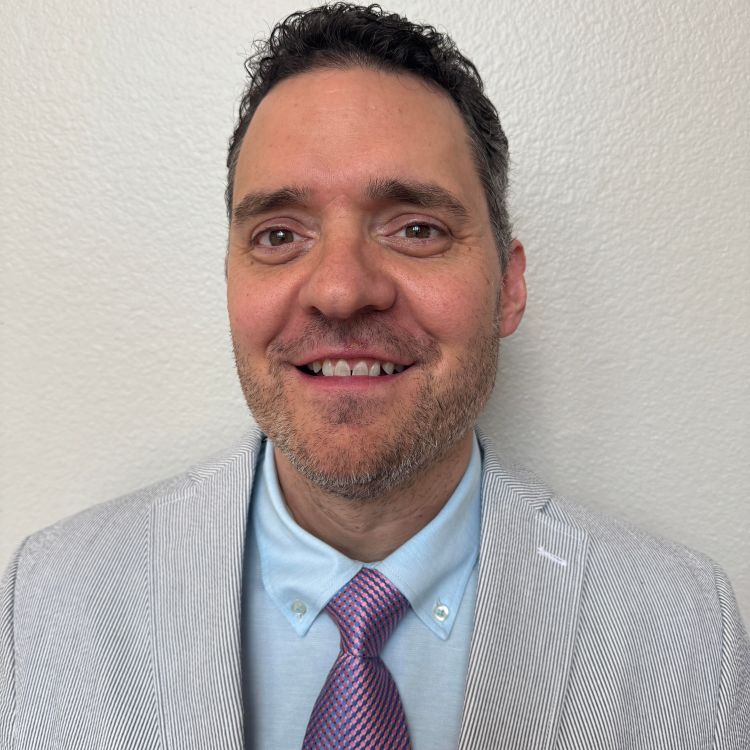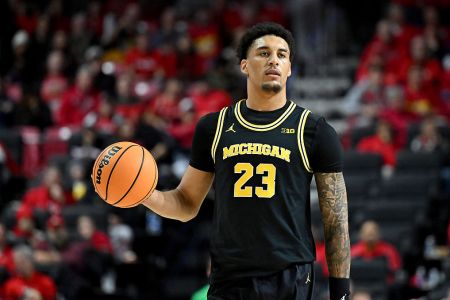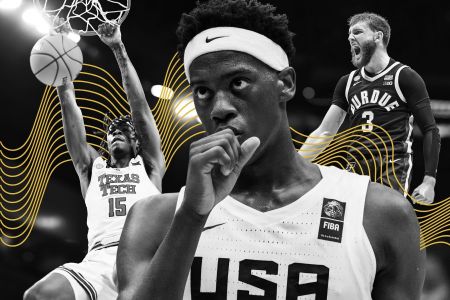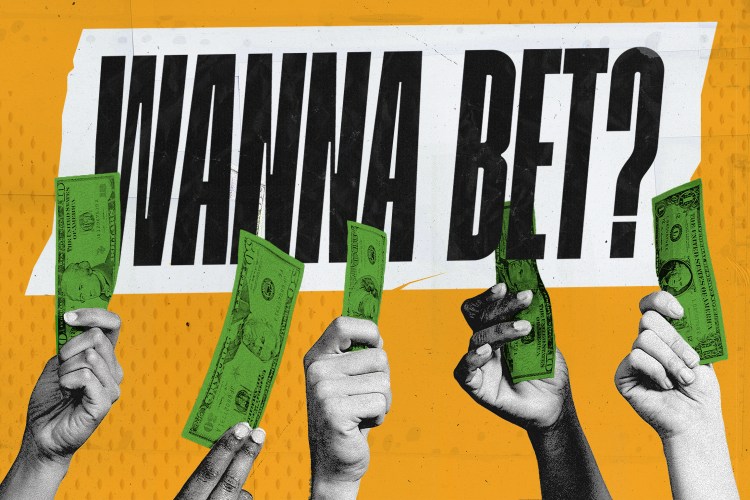DENVER — For a glimpse into college basketball’s future, look no further than BYU’s locker room.
There’s Akash Sebastian, the Cougars’ director of analytics and strategy, at the center of a staff huddle, wielding a laptop and bursting with enthusiasm as he relays an array of advanced shooting data. There’s chief of staff Doug Stewart, who has earned national acclaim for his impact in the NIL space. And there’s a bevy of well-traveled assistants, many of whom have international or NBA coaching pedigrees.
This is not your father’s college basketball program. Every aspect of the Cougars — from analytics and nutrition to high pick-and-rolls and a rim-and-three’s offense — follows an NBA blueprint that first-year coach Kevin Young installed after arriving in Provo following six years as an NBA assistant.
“It really rears its head in every part of our program,” said Young, who served as a Philadelphia 76ers assistant from 2016-19 and as a Phoenix Suns assistant from 2020-23. “It’s not just style of play. It’s not just film. It’s literally everything we do. Mainly because that’s what I know.”
As college basketball moves to a professional financial paradigm, an all-encompassing NBA model is increasingly seen as the cutting-edge advantage that can maximize on-court potential. With BYU’s success this season — from reaching Saturday’s second round of the NCAA Tournament, where it will play Wisconsin, to landing the nation’s No. 1 recruit (6-foot-9 wing AJ Dybantsa) — other programs are taking notice of the Provo playbook. In recent weeks, Iona, Utah and Florida State have hired head coaches with NBA coaching backgrounds.
“More college teams are getting constructed more like NBA teams,” said Young, 43.
Hang around BYU’s program even briefly and you’ll hear phrases like “processes and methods” and “stacking good days.” The program takes a forward-looking, innovative professional approach — in every facet.
Stewart told Hoops HQ that the “day one order” was to assemble the proper staff to have the most extensive reach in basketball and recruiting. That meant accounting for three specific lanes of expertise: NBA, international and college.
Nutritionist Danielle LaFata was hired from the Phoenix Suns. Assistant Will Voit has extensive NBA G League and international coaching experience. The same for Jordan Brady, the team’s director of player development. Assistant Tim Fanning arrived with robust international and Overtime Elite coaching credentials.
“There is a plan for everything and a system for everything across the board for what we do in that NBA-style of front office and coaching space,” Stewart said.
On the court, there is a heavy NBA influence on how the Cougars play. They place an emphasis on two-for-one opportunities at the end of a half. They often take advantage of high pick-and-rolls. Assistant Chris Burgess is in charge of late-game clock management.
They place a priority on spacing, which often results in eschewing mid-range jumpers. They want dribblers to attack the basket, then assess options, most notably spraying the ball back out for a three-pointer. Nearly half of the shots they’ve taken (1,915) are three-point attempts (929).
“They are a wicked three-point shooting team,” said VCU coach Ryan Odom, whose team lost to BYU in the first round.
Even pregame, there are differences from the traditional college routine. Players are separated into pods based on position groups and can ride separately to the game for smaller group pregame workouts.
In practice, they use the popular wearable Catapult to measure players’ workloads. They also use two technologies — Noah Basketball and ShotTracker — to do a deep dive into shooting performance and form.
Load management is the coin of the realm in the NBA; no BYU player averages more than 30 minutes per game.
What’s more, Young held a NBA-style combine for his players to assess a wide array of athletic measurables. BYU’s strength and conditioning coach, Michael Davie, arrived after spending eight years with the Milwaukee Bucks and provides a pro-level training regimen.
The staff sees advanced analytics as a differentiator from most other programs. After each game, Sebastian gives coaches a two-page hard copy of insights. But they also convene with Sebastian to dig into trends that emerged over the past 10 games.
BYU First-Year Coach Kevin Young Has the Cougars Winning and Recruiting
BYU could bust some brackets in this tournament, but its fan base knows that incoming No. 1 recruit A.J. Dybantsa could make next season even more special
AJ Dybantsa, the Top-Ranked Recruit in the Class of 2025, Commits to BYU
The do-it-all wing chose the Cougars over Kansas, North Carolina and Alabama
For instance, Sebastian told Hoops HQ, “OK, we have a post-up guy — what are the outcomes when he posts up on the right side versus the left side? When a player is in pick-and-roll, when does he turn it over. Why does he turn it over?”
When formulating game plans, the staff combines analytics with what they see on game tape, relying on eyes as well as numbers. Sebastian said Young knows when to rely on analytics and when not to.
“I rely on my experience of putting game plans together to stop the best players in the world,” said Young, who spent 17 years in the pros, including the NBA D League. “I always think, ‘We tried this against Jayson Tatum. We tried this against Luka (Doncic).’
“For me, that gives me a lot of comfort. I think it gives our players comfort. We have a coach that’s coached in two Olympic Games. I have a coach that’s coached six years in the Euro League. These are cutthroat leagues these guys have come from, not to mention a handful of college coaches, too.”
In recruiting, the staff’s vast experience in the pros is a significant advantage now that agents dwarf AAU coaches in influence with elite talent. And the program’s NIL war chest is substantial; BYU reportedly secured Dybantsa with a NIL package worth near $7 million.
Even the composition of BYU’s roster mimics the NBA, which is increasingly stocked with foreign-born players. BYU’s team is composed of players from six countries: Australia, Mali, Russia, Serbia, Senegal and the United States.
The results in year one have been striking. Richie Saunders was named the Big 12’s most improved player. Freshman Egor Demin, 19, a native of Moscow, is projected as a top-10 pick in June’s NBA Draft. And the team — a quasi-NBA program housed on a college campus — surges into the second round of the NCAA Tournament with players who have fully embraced Young’s professional model.
“They’ve bought into our style of play, the way we warm up, the way we watch film, the way our analytics guys are involved, nutritionists are involved — literally top to bottom,” Young said. “That is something I’m proud of, for sure.”
